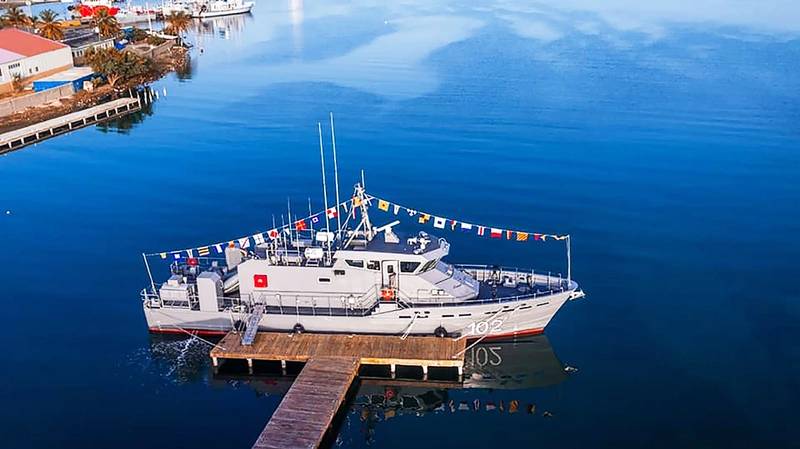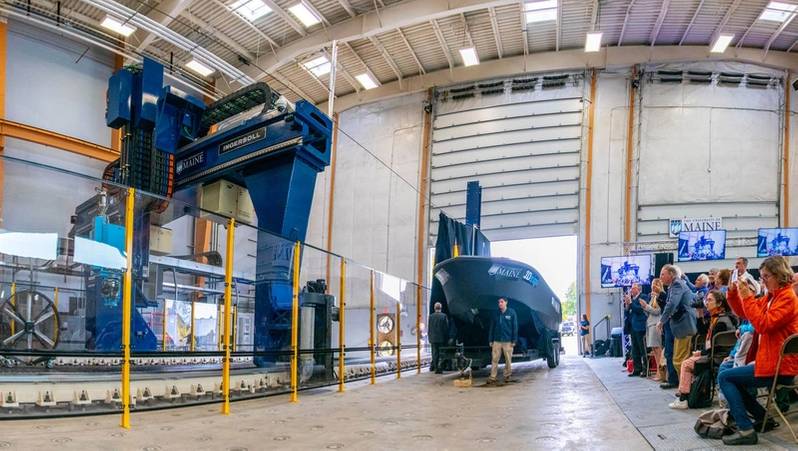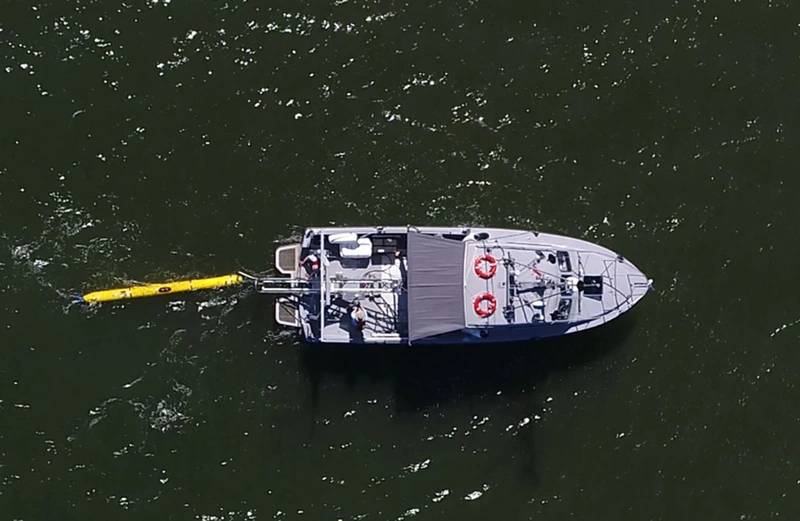Navy Combat Craft - Boats Evolve to Keep Pace with Threats
Combat craft are used by both large and small navies, and every navy, coast guard or maritime service operates some kind of boats.
The U.S. Navy’s boats are used for a variety of tasks from personnel and cargo transport to ship repair and maintenance to environmental response.
The combat craft range from pull sized patrol boats down to ridged-hull inflatable boats (RIBs) armed with machine guns. Boats include shipboard RIBs, maritime security boats, dive support boats, workboats, and a number of others that help carry out escort, anti-terrorism/force protection, search and rescue, maritime interdiction and visit, board, search and seizure missions.
The U.S. Navy’s boat fleet is operated by different entities. The shipboard boats come under Commander Fleet Forces Command and Commander Pacific Fleet. Workboats and dive platforms used for ship husbandry come under Naval Facilities Engineering Command or Naval Sea Systems Command. Boats used for special operations or maritime security functions are managed by Navy Special Operations Command and Navy Expeditionary Combat Command.
The Navy’s boats and combatant craft acquisition and life cycle management (LCM) services are the responsibility of PMS 300 under PEO Ships, which supports major customers such as Naval Expeditionary Combat Command (NECC), U.S. Fleet Forces Command (USFFC), Commander Navy Installations Command (CNIC), Naval Special Warfare (NSW), and other customer enterprises.
The Naval Surface Warfare Center Carderock Division operates its Combat Craft Division at facilities on Joint Base Little Creek/Fort Story and Naval Base Norfolk, and provides in-service engineering support for the Navy’s existing fleet of combat craft and boats, as well as design, prototyping and modification of boats to upgrade their capabilities or serve in new roles. CCD is also called upon to advise commands on what boats will best serve the required purpose.
Ships carry their own boats, but other boats and craft must be transported by ship or aircraft.
Designs, materials, propulsion and systems have been evolving rapidly to meet emerging requirements and counter growing threats. The NCPV Betelgeuse is docked during a ceremony at La Calderas naval base in Peravia, Dominican Republic, on August 6, 2020. The U.S. is delivering Near Coastal Patrol Vessel (NCPV)s to navies and coast guards in the U.S. Southern Command area of operations. The 85-foot NCPVs are built by Metal Shark at Franklin, La., for the Dominican Republic, El Salvador, Honduras, Costa Rica, Guatemala, and other United States partner nations. Photo courtesy Dominican Navy
The NCPV Betelgeuse is docked during a ceremony at La Calderas naval base in Peravia, Dominican Republic, on August 6, 2020. The U.S. is delivering Near Coastal Patrol Vessel (NCPV)s to navies and coast guards in the U.S. Southern Command area of operations. The 85-foot NCPVs are built by Metal Shark at Franklin, La., for the Dominican Republic, El Salvador, Honduras, Costa Rica, Guatemala, and other United States partner nations. Photo courtesy Dominican Navy
Materials
Fiberglass, aluminum and composite are commonly used for boats and combat craft. New and larger 3-D printers are making it possible to print entire boats.
The University of Maine (UMaine) Advanced Structures and Composites Center in Orono, Maine has a 3D printer that has successfully produced two new large-scale boats in just a few days.
According to a press release from the university, two prototype boats were developed for the Marine Corps to support logistics of disperse personnel. “The larger one can carry two 20-foot shipping containers, while the other can transport an entire rifle squad with three days’ worth of food, water, and other supplies,” the release said.
Back in 2019, UMaine used its 3D printer to manufacture 25-foot 3Dirigo boat in just 72 hours. It was the world’s largest 3D printed boat as well as the world’s largest 3D printed object at that time.
CCD is using basic hulls 3-D printed from high density polyethylene HDPE by Tideman Boats. The boats are easily configured for a variety of purposes. According to the company’s website, their boats are non-corrosive, unsinkable and indestructible.
The HDPE boats can be easily converted or configured for different missions to become a serviceable experimental asset for R&D or demonstration purposes. Additive manufacturing can now print entire boats. The University of Maine’s 3Dirigo weighs 5,000 pounds and was printed in 72 hours.
Additive manufacturing can now print entire boats. The University of Maine’s 3Dirigo weighs 5,000 pounds and was printed in 72 hours.
Photo courtesy of UMaine.
Propulsion Considerations
Rear Adm. Massimo Annati, a retired Italian naval officer and an expert on small boat design and operations, said propulsion is, of course, a key factor for high-speed craft. “In the case of small craft, with limited draft, traditional propellers cavitate quite soon and 35-40 knots represent a definite limit. High-speed craft exploit surface drivers or water-jets. Both have some pros and cons, though proponents of one or other solution tend to describe it as the very best for all the possible situations.”
According to Annati, surface drives (also known as surface-piercing propellers) were designed to operate with just half of the propeller disk underwater. This implies that surface propellers eliminate cavitation by replacing it with ventilation. Water-jets offer a number of advantages up to speed of 45-50 knots. In term of maneuverability the water-jets out-maneuver the surface-propellers at all speeds. In particular water-jets offer much tighter turnings and can perform emergency crash-stop maneuver.
“Even if articulated surface-drives have a better behavior, yet they can’t beat the water-jets. Both water jets and articulated surface drives are turnable and trimmable, and don’t require a rudder. The surface-propellers are also quite scarce when one has to move astern, while instead water-jets are very responsive. Quite the same for slow motion and holding position in current or tides. Waterjets can do easily the job, while surface-propellers have a lot of troubles and can operate only at a minimum speed of 6 to 7 knots,” Annati said.
Waterjets provide some safety in shallow water. “Collision with submerged objects or grounding can be a tolerable event because the intake is flush with the bottom of the craft and the drive system has just a limited further draft. This allows a water-jet craft to cross very shallow waterways without great risks. However, running in shallow waters with the presence of sandy bottom (or in presence of small objects like plastic bags, nets, branches of trees, sea weeds, etc.) can easily cause an impeller stoppage, for it operates like a giant vacuum cleaner, sucking is nearly everything it can.”
In case of boats equipped with surface-piercing propellers, Annati said collisions or groundings represent a very serious risk of damage. “Also, the presence of swimmers in water nearby the boat, be they combat divers to be deployed-recovered, or stranded people to be saved, represents a critical hazard, because the blades of a surface propellers would behave just like a food-processor.”
Weapons
Boats and combat craft have been equipped with small arms to crew remote-controlled guns and even missiles, such as Rafael Spike, Griffin, NLOS and Hellfire Longbow.
Speed and firepower have become valuable attributes for naval boats. But, according to John Kaman, a retired Navy captain and naval engineer with expertise in combat craft, “If you’re going to go fast, then you need shock-absorbing seating for the crew and stabilization for your gun.”
 The RAN deployable mine countermeasures system prepares to launch a General Dynamics Bluefin Robotics underwater vehicle. Some navies are employing boats in both manned and uncrewed variants. The Royal Australian Navy’s SEA 1778 deployable mine countermeasures capability uses 38-foot manned MCM support boats to launch and recover the various subsystems of the SEA 1778 system, such as the General Dynamics Mission Systems Bluefin-9 and -12 unmanned underwater vehicles (UUVs). SEA 1778 also uses two unmanned boats that carry MCM payloads into minefields without endangering personnel. The boats are made by Steber International. Photo courtesy Thales Group
The RAN deployable mine countermeasures system prepares to launch a General Dynamics Bluefin Robotics underwater vehicle. Some navies are employing boats in both manned and uncrewed variants. The Royal Australian Navy’s SEA 1778 deployable mine countermeasures capability uses 38-foot manned MCM support boats to launch and recover the various subsystems of the SEA 1778 system, such as the General Dynamics Mission Systems Bluefin-9 and -12 unmanned underwater vehicles (UUVs). SEA 1778 also uses two unmanned boats that carry MCM payloads into minefields without endangering personnel. The boats are made by Steber International. Photo courtesy Thales Group
























